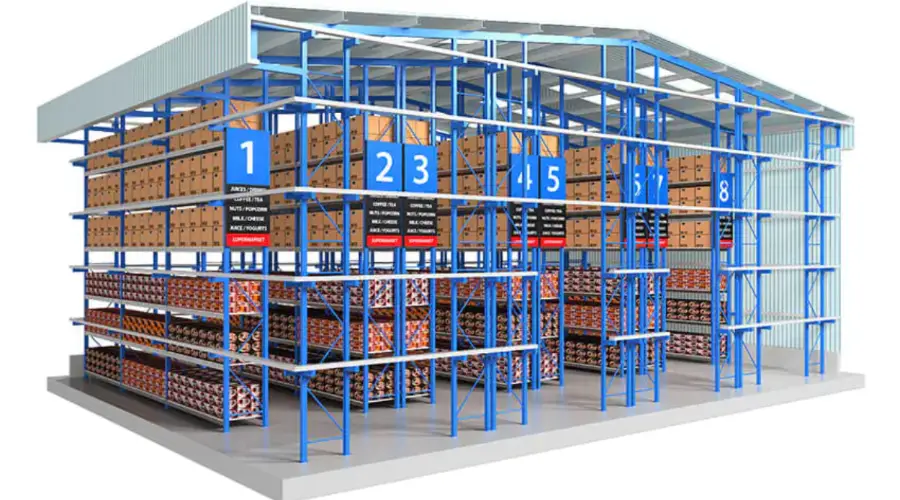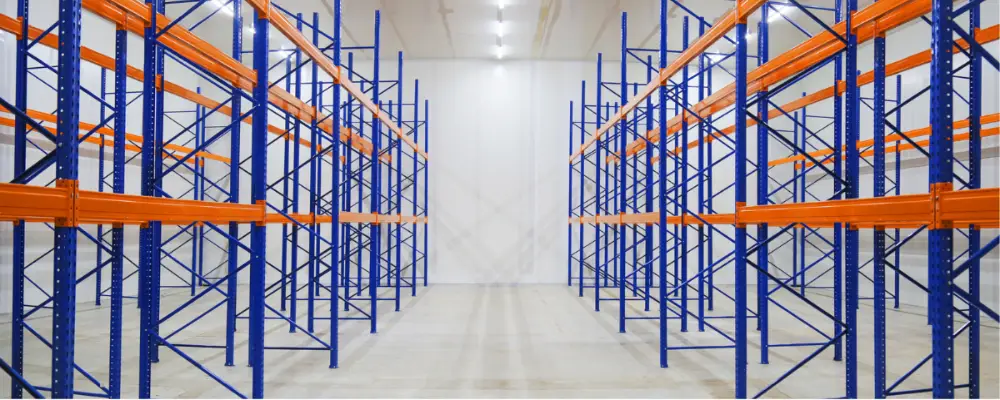Racking is a crucial factor in construction that affects the integrity of the structure by causing instability, damage, or even collapse. This negative factor is prone to high-rise buildings and seismic areas. It is crucial to understand the causes and preventive measures to ensure the safety and longevity of the buildings. This blog will help in understanding the detailed overview of racking, the importance of racking resistance, and the prevention methods.
What is Racking?
Racking in construction refers to the lateral movement or swaying of a structure when subjected to external forces such as wind and other seismic activities. It is a serious issue that could result in instability, damage, and even the collapse of structures. It is generally used in advanced construction work to ensure the structural integrity and safety of a building and its occupants.
What are the Benefits of Racking Resistance?
Racking resistance provides numerous benefits to the structure, such as enhancing its durability and resistance against external lateral and seismic forces. Its stability and durability help reduce the potential chances of collapse and ensure the safety of occupants.
Structures with racking resistance installed require minimal maintenance, reducing the maintenance cost and thereby increasing the lifespan. The improved safety features also help in increasing the property values.
Factors Affecting Racking Resistance
Building Design

Building design plays a major role in determining racking. Features such as layout, height, and overall geometry of the building influence the resistance against racking. Taller buildings with irregular shapes are prone to racking compared to well-designed structures that have good resistance against structural stability.
Material Selection
The choice of construction materials and their quality can have a significant impact on racking resistance. Materials of high quality with appropriate strength provide the necessary load-bearing capacity. The density and quality play a critical role in ensuring the durability of the structure under stress.
Foundation Type
The type of foundation used for the construction could influence the stability of the building against lateral forces. Foundations that are strong and well-anchored improve the overall stability and help in the effective distribution of loads. A stable foundation reduces the risk of structural failure, protecting the structure against external seismic forces.
Environmental Conditions
Environmental conditions such as geographical location, seismic activity, and wind and snow loads can influence racking. Buildings located in seismic zones are more prone to racking due to earthquakes based on the magnitude and frequency.
Load Characteristics
Loads are a major factor that influences the racking resistance of the building. Loads caused by the wind, machinery vibrations, live loads, thermal movements, and other external forces can cause lateral movement of the structure, affecting its integrity.
Methods to Prevent and Mitigate Racking
Prevention
- Providing lateral stability using bracing systems (diagonal bracing, shear walls, or moment frames) is crucial to withstand external lateral loads.
- Selecting structural members of appropriate size and strength ensures that they can withstand impending loads without causing deformation.
- Designing a structure to help uniformly distribute loads can prevent the risk of racking.
- Proper installation of the bracing systems can provide necessary support to the existing structure.
- Using high-quality materials provides the necessary strength and durability of the structure.
- Regular inspection and maintenance during construction can help identify and prevent potential risks.
Mitigation
Identifying and addressing racking is crucial in mitigating the damages and preventing further problems. Cracking in walls/floors, poor closing of doors and windows, uneven settling, and visible deformation of structural members are some of the early visible signs of racking. Inspecting these signs early and providing appropriate remedial actions through bracing, reinforcement, or partial replacement could fix this problem.
Challenges in Racking Mitigation
- Providing racking mitigation can be time-consuming and requires intensive labour to install braces/racking shores.
- It requires careful calculations to determine the proper size and spacing to reduce the risk of misalignment and further deterioration.
- In small and complex spaces, the installation of reinforcement could be more challenging.
- Providing the racking resistance is temporary and cannot be a suitable solution for long-term or permanent structures.
- In the case of extreme environmental conditions, the systems are vulnerable to failure or damage.
Racking Solutions in Construction
Shear Walls
Shear walls are vertical, load-bearing walls that act as a rigid barrier and help in transferring lateral loads to the foundation, preventing racking. These walls are generally used in tall and multi-story buildings, especially in high-wind areas.
Bracing Systems
Providing diagonal braces in the shape of an “X”, made of steel or timber between the beams and columns, provides stability against lateral forces and helps in uniform distribution of forces. These bracing systems are generally used in industrial buildings and in seismic areas.
Diaphragms
Diaphragms are horizontal elements that act like large decks to distribute lateral forces to vertical elements such as shear walls or braces. This approach is widely used in both residential and commercial buildings to enhance resistance against racking.
Moment-Resisting Frames
It is a framing structure that consists of beams and columns that are connected rigidly to resist the bending and rotational forces caused by lateral movements. These moment-resisting frames are flexible, yet strong enough to withstand forces. These frames are generally used in tall buildings, where aesthetic importance is crucial.
Conclusion
In summary, racking in construction is a serious issue that needs to be inspected and addressed at the earliest stage to prevent costly damages. By understanding the preventive measures and racking resistance, this crucial issue can be reduced or eliminated. It is always necessary to consult an experienced structural engineer to prevent and mitigate concerning structural issues.

